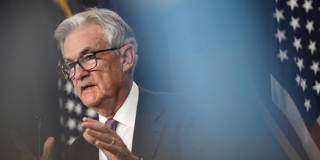There is good reason to believe that temporary increases in inflation, driven by large swings in relative prices, will become more common. In this new era, how policymakers think about inflation must apply the lessons of past experience to current price conditions and, on that basis, attempt to anticipate what the future may hold.
LONDON – After reaching its highest level in decades in mid-2022, inflation in the United States and the eurozone fell sharply over the second half of last year. But, in December, the headline consumer price index (CPI) in the US and the Harmonized Index of Consumer Prices (HICP) in the eurozone rose slightly. Was it an aftershock or a foreshock?
The speed of last year’s disinflation surprised many, not least central banks, which have insisted that it is too early to claim victory. But are they urging caution because they believe that there is persistent underlying inflationary pressure – which might explain the recent uptick – or are they simply acknowledging uncertainty?
Markets seem to be embracing the latter explanation, anticipating that both the US Federal Reserve and the European Central Bank will start cutting interest rates in the spring. This sentiment is not unfounded: if we consider the six-month annual percentage change in core inflation – a timelier indicator of underlying inflation than the 12-month change – both the US and the eurozone have brought inflation back down to their 2% target. The evidence points to a persistent decline, regardless of the recent (small) increase in headline figures.

LONDON – After reaching its highest level in decades in mid-2022, inflation in the United States and the eurozone fell sharply over the second half of last year. But, in December, the headline consumer price index (CPI) in the US and the Harmonized Index of Consumer Prices (HICP) in the eurozone rose slightly. Was it an aftershock or a foreshock?
The speed of last year’s disinflation surprised many, not least central banks, which have insisted that it is too early to claim victory. But are they urging caution because they believe that there is persistent underlying inflationary pressure – which might explain the recent uptick – or are they simply acknowledging uncertainty?
Markets seem to be embracing the latter explanation, anticipating that both the US Federal Reserve and the European Central Bank will start cutting interest rates in the spring. This sentiment is not unfounded: if we consider the six-month annual percentage change in core inflation – a timelier indicator of underlying inflation than the 12-month change – both the US and the eurozone have brought inflation back down to their 2% target. The evidence points to a persistent decline, regardless of the recent (small) increase in headline figures.